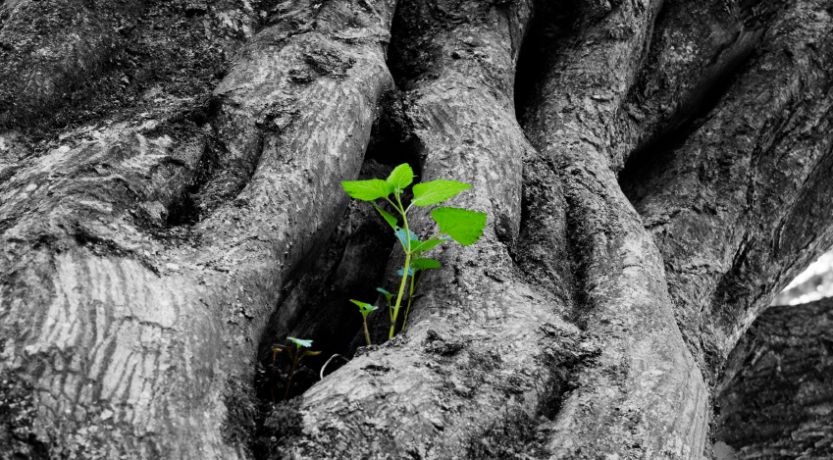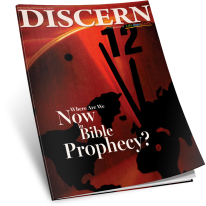Is there a tree of life? Was there ever such a tree, representing the secrets of a long and happy life? If so, what became of it? Will it be seen again?

What did the two trees in the Garden of Eden symbolize?
The book of Genesis shows that God put Adam and Eve in the Garden of Eden. They were allowed to eat the fruit of all trees, including the tree of life, but not the tree of the knowledge of good and evil (Genesis 2-3). Eating the fruit of the tree of life represented choosing total reliance on God to show what is good or evil (through His law and Holy Spirit). Eating the fruit of the latter tree represented human beings choosing for themselves what is good and evil, rejecting any direction from God.
The tree of life! What a poetic, almost romantic name for a tree. It fires the imagination and produces wonderful images of energy, health, a bright future and good times.
The tree of life may call to mind man’s quest for the proverbial fountain of youth, with the promise of never-ending joy and happiness.
But the skeptic is likely to exclaim, “There simply is no such thing!”
Looking for the tree of life
Most of us familiar with the term know that the tree of life is mentioned in the Bible in the early chapters of the book of Genesis. We associate it with Adam and Eve and their sin that separated them from God.
We may not be as aware that this tree is mentioned in other Bible passages and that from them we can draw some conclusions about the value of the tree and its properties. Could it be that we would make better life choices if we understood what Adam rejected?
Two trees in the Garden of Eden
First, let’s look at the earliest account of the tree of life in the Garden of Eden. We read that God planted a garden and filled it with a variety of plants to supply the needs of man. These were “pleasant to the sight and good for food” (Genesis 2:8-9).
Next we read, “The tree of life was also in the midst of the garden, and the tree of the knowledge of good and evil” (verse 9).
The Bible does not say that these were not trees that produced fruit that could be used as food. In fact, we later find Eve reasoning that the tree of the knowledge of good and evil was “good for food, that it was pleasant to the eyes, and a tree desirable to make one wise” (3:6).
We can easily see that these two trees were also fruit trees. Yet they had special importance to our first parents and the future of humanity. In fact, the choice that Adam made to eat of the forbidden fruit has a far-reaching impact on our world today.
The purpose of the two trees
What was the purpose of these two trees? Why are they singled out and why were Adam and Eve given special instructions about their use?
Notice: “And the LORD God commanded the man, saying, ‘Of every tree of the garden you may freely eat; but of the tree of the knowledge of good and evil you shall not eat, for in the day that you eat of it you shall surely die” (Genesis 2:16-17).
It is clear that this was the only forbidden tree, or what is commonly called the forbidden fruit. The life-giving tree, by contrast, was free for the taking.
It should be plain, therefore, that the evil was not in the fruit itself, but in the choice to eat it, against God’s clear command: “You shall not eat.”
God had placed Adam and Eve in the Garden of Eden, knowing full well that Satan, the “god of this age” (2 Corinthians 4:4), would attempt to bring them under his influence and control. God wanted them to remain loyal and faithful to Him, in order that He might give them every good thing, including eternal life if they accepted His rule over them. His intent was to bring them into His spiritual family in due time.
It is ironic that in eating the forbidden fruit, Adam and Eve thought they were enjoying freedom when, in reality, they were subjugating themselves to sin.
He gave them a choice between the tree of life and the tree of the knowledge of good and evil. Can we see that these two trees represented a choice between obeying God’s command and ignoring God’s authority in order to pursue the false goal offered by the devil?
In rejecting God’s instruction and taking of the wrong tree, they surrendered their fate to Satan and took themselves out of God’s protection and provision. In short, they chose Satan’s way of life, which is the opposite of God’s way.
Choosing between life and death
A brief review of the Scriptures shows that “sin is the transgression of the law” (1 John 3:4, King James Version), that “the wages of sin is death” (Romans 6:23) and that “there is a way that seems right to a man, but its end is the way of death” (Proverbs 14:12).
When God commanded Adam not to take of the tree of the knowledge of good and evil, He was showing him what choice he should make. God wanted him to choose life, not death.
Much later, when God brought Israel out of Egypt, He gave them a similar choice: “I have set before you life and death, blessing and cursing; therefore choose life, that both you and your descendants may live” (Deuteronomy 30:19).
The tree of the knowledge of good and evil
Why did God call one of these trees the tree of the knowledge of good and evil, instead of just calling it the tree of death? Clearly, it was the opposite of the tree of life.
Still, using this name gives us insight into how God thinks and how He works with mankind. He gives all men the choice of whom to obey, whether Satan or God. When Adam and Eve ate the fruit in defiance of God’s command and warning, they declared themselves independent from God and His law. They proclaimed by their actions that they would decide for themselves what is good and what is evil.
The name of this tree indicates that its fruit had some good and some evil. It was not completely evil. Through our ability to think and reason—a gift from God at creation—mankind has produced amazing technological feats. But sadly, we humans have not had the character or discipline to use our inventions wisely. Almost every invention has been abused and used for evil purposes.
It is evident that the tree of the knowledge of good and evil did not contain the knowledge that was needed for eternal life. Rather, the very act of eating from it was a choice to trust in themselves, though in reality they were enslaving themselves to Satan the devil.
It is ironic that in eating the forbidden fruit, Adam and Eve thought they were enjoying freedom when, in reality, they were subjugating themselves to sin. Paul and Peter referred to this way of life as “bondage” (Galatians 2:4; 4:3, 9; 5:1; 2 Peter 2:19). It is slavery to sin (Romans 6:6, 16).
Adam and Eve accepted Satan’s lies and influence. They apparently believed that God was keeping something from them. Yet their action cut them and their descendants off from God, the only source of true knowledge and wisdom. The long-term result was the proliferation of sin and death.
Later in man’s sordid history, wise King Solomon, inspired by the same God, again expressed the choice put before man through all time. He tells us, “Trust in the LORD with all your heart, and lean not on your own understanding; in all your ways acknowledge Him, and He shall direct your paths. Do not be wise in your own eyes; fear the LORD and depart from evil” (Proverbs 3:5-7).
The key to successful living is to look to our Creator for guidance and strength to live according to His will. The life-giving tree surely must have represented God’s law and His Holy Spirit, which Jesus said “will guide you into all truth” (John 16:13). How many of us today are rejecting God’s wisdom and leaning on our own understanding, as Adam and Eve did?
Lessons from the tree of the knowledge of good and evil
There are several important lessons we can learn about Satan from the way he influenced Adam and Eve to disobey God and eat the forbidden fruit.
- Satan is a liar. When Satan tempted Eve, he lied that Eve would not die for eating the forbidden fruit. “You will not surely die,” he brazenly said (Genesis 3:4). Speaking of this deep character flaw in the Devil, Jesus said that Satan “does not stand in the truth, because there is no truth in him. When he speaks a lie, he speaks from his own resources, for he is a liar and the father of it” (John 8:44).
- Satan is a murderer. This evil being purposely lied to Eve so she would choose his way of death. This makes him a murderer. Satan hates humans, who have the potential to become part of the eternal God family (Genesis 1:26-27; John 1:12). Noting this ugly aspect of Satan’s nature, Jesus succinctly stated, “He was a murderer from the beginning” (John 8:44).
- Satan is a deceiver. The account of Satan’s encounter with Eve begins with this key description of our adversary: “Now the serpent was more cunning than any beast of the field which the LORD God had made” (Genesis 3:1). Satan has an extensive and impressive bag of tricks that he uses to make people think good is evil and evil is good. Commenting on this fact, Paul wrote to the Corinthian brethren about the importance of not allowing Satan to “take advantage of us; for we are not ignorant of his devices” (2 Corinthians 2:11). Satan is so good at what he does, he “deceives the whole world”—that is, the majority of all mankind (Revelation 12:9). This veil of deception, however, is lifted when people turn to Christ (2 Corinthians 3:14, 16).
Understanding these lessons helps us see the distinction between the two trees that were in the Garden of Eden. This understanding also helps us know even more why we must choose the tree of life.
Two trees revisited
A natural question is, “What would have happened if Adam and Eve had eaten of the other tree?” Again, the Bible gives the answer. Jesus Christ, the Son of God, who came to save man from sin, made some powerful statements about our choices. He said, “It is the Spirit [that] gives life; the flesh profits nothing. The words that I speak to you are spirit, and they are life” (John 6:63).
Here Christ’s commands and His Spirit are shown as the source of life. Would we not conclude that they are represented in the tree of life?
Jesus also said, “I am the way, the truth, and the life” (John 14:6). So the tree would have included Christ’s words, which are the truth that leads to life. Had Adam and Eve eaten of the life-giving tree, they would have been granted God’s true knowledge of right and wrong and a reliance on God to teach them how to live.
One of the most profound lessons given by Jesus came during His confrontation with the devil during His temptation in the wilderness. He gives this powerful instruction in defense of His refusal to compromise: “Man shall not live by bread alone, but by every word that proceeds from the mouth of God” (Matthew 4:4).
Tree of life in the future
Will this tree of life, from which man was banished, appear again? The book of Revelation contains prophecies of the end of this age. It points to the presence of a tree of life among the righteous who yield themselves to God’s authority.
“He who has an ear, let him hear what the Spirit says to the churches. To him who overcomes I will give to eat from the tree of life, which is in the midst of the Paradise of God” (Revelation 2:7).
And in the final chapter of the Bible it says, “Blessed are those who do His commandments, that they may have the right to the tree of life, and may enter through the gates into the city” (Revelation 22:14).
The tree of life never died. Humanity was cut off from the tree because Adam and Eve and every generation since have chosen the other tree, and we could not have both.
The knowledge and Spirit represented by the life-giving tree are available to us today in the words and power of Jesus Christ.
Will you make the same old mistake our ancestors have made down through the centuries and choose the tree of the knowledge of good and evil? Or will you search out the tree of life and eat of it, that you may have eternal life? To do so, you must ask God to reveal His ways to you and commit to following them when He does.
The choice is yours. Choose life!




